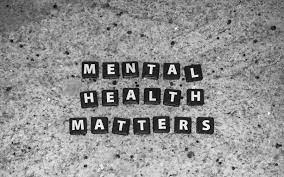Mental health encompasses emotional well-being, psychological health, and overall mental wellness. While therapy and medication are fundamental tools for many, there’s another way to support emotional well-being: creative expression. Creative outlets provide a safe space to process emotions, reduce stress, and reconnect with yourself. Let’s explore how engaging in creative activities can enhance mental health.
Creative Outlet Benefits
Creative outlets provide numerous advantages for mental health and psychological well-being:
- Reduces Stress: Creative activities stimulate the parasympathetic nervous system, promoting relaxation and lowering cortisol levels. This physiological response helps manage stress and anxiety symptoms.
- Expresses Emotions: Creative pursuits offer safe channels for processing difficult emotions. Art, music, and writing provide non-verbal means to explore and express feelings that may be difficult to articulate verbally.
- Improves mood: Engaging in creative activities stimulates the release of dopamine and endorphins, which are neurotransmitters associated with pleasure and well-being.
- Enhances self-esteem: Completing creative projects provides a sense of accomplishment and mastery. This achievement can boost confidence and self-worth, which are fundamental components of psychological health.
- Aids Mindfulness: Creative activities require focus and attention, which naturally promotes mindfulness. This state of present-moment awareness may help reduce rumination and worry.
- Boosts Social connection: Group creative activities foster social bonds and reduce isolation. Community art classes, music groups, and writing circles provide opportunities for meaningful social interaction.
These benefits demonstrate how creative outlets serve as valuable tools for maintaining and improving mental wellness.
Creative Therapies
Mental health professionals incorporate creative therapies into treatment plans through structured approaches that target specific psychological conditions. Art therapy utilizes visual arts to help clients process trauma, express emotions, and develop coping strategies. Music therapy employs sound and rhythm to address anxiety, depression, and behavioral challenges. These therapeutic modalities provide alternative communication methods for clients who struggle with traditional talk therapy.
Drama therapy and movement therapy offer avenues for psychological healing through physical expression and role-playing. These approaches help clients explore identity, process experiences, and develop new behavioral patterns. Writing therapy, also known as expressive writing, helps individuals process traumatic experiences and create a coherent narrative about their lives. Mental health professionals often combine creative therapies with traditional therapeutic approaches to develop comprehensive treatment plans.
Practical Tips
Integrating creative activities into daily life requires intentional planning and realistic expectations:
- Start small: Begin with simple creative activities that require minimal equipment or experience. Drawing or journaling can provide immediate benefits with minimal time investment.
- Schedule regular creative time: Designate specific times for creative activities to make them a consistent part of your routine. Even 15-20 minutes of daily exercise can yield significant mental health benefits.
- Explore different mediums: Try various creative outlets to discover what resonates with you. Photography, cooking, gardening, and crafting all offer opportunities for creative expression.
- Join creative communities: Participate in local art classes, book clubs, or music groups to combine creative expression with social connection. Online communities also provide support and inspiration.
- Focus on process over product: Emphasize the experience of creating rather than the quality of the final result. This approach reduces performance pressure and maximizes therapeutic benefits.
These strategies help make creative expression a sustainable and beneficial part of mental wellness. Regular creative practice can serve as both a preventive measure and a coping strategy for managing psychological challenges.
Speak to a Specialist About Your Mental Health Needs
Creative outlets offer valuable support for mental wellness by reducing stress, facilitating emotional expression, and promoting mood improvement. Mental health professionals use creative therapies to address various psychological conditions and enhance traditional treatment approaches. Contact a certified psychiatrist to explore how creative expression and professional mental health services can work together to support your psychological well-being.
- How To Create a Personalized Weight Loss Plan
- The Importance of Foot Care for Diabetes: Prevention Tips You Need
- Cutting vs. Polishing Tools in Dentistry: Key Differences Every Dental Professional Should Know
- What Are the Symptoms of Depression?
- Understanding the Role of Neurologists in Managing Chronic Headaches


Leave a Reply